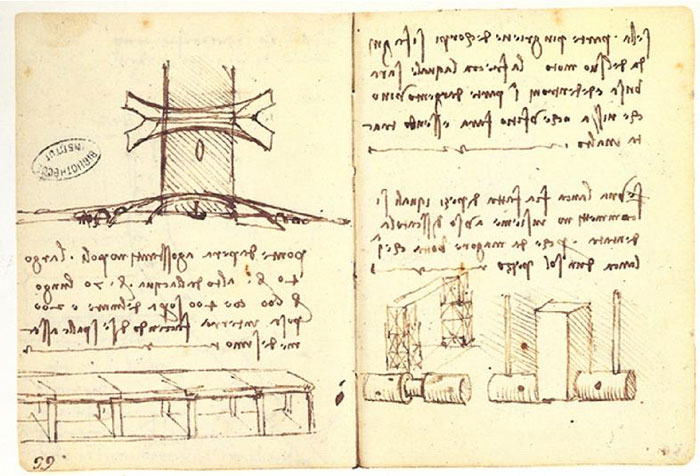The international project is being led by Eindhoven University of Technology (TU/e) and is the third of its kind undertaken by TU/e’s Built Environment department. Previously, it has built the world’s largest and highest ice-domes. The design of the ice bridge is based on a sketch by Leonardo da Vinci from 1502.

The site of the project will be the Finnish town of Juuka. Team members will work in shifts, with work continuing 24 hours a day, seven days as week in what TU/e describes as “severe conditions.” Stopping work for any length of time will not bepossible because the equipment would freeze in the low temperatures.
To construct the bridge, a material called “pykrete” is used, which comprises water mixed with paper fiber. Once it has frozen, the mixture is said to be three times as strong as normal ice and ten times as tough. It is sprayed onto an inflated mold in layers and, once the process is complete, the mold is removed from underneath.
Around 900 tons (816 tonnes) of pykrete will be used to build the bridge, which will be 5-m (16-ft) wide, 65-m (213-ft) long and have a free span of 35 m (115 ft). To demonstrate its strength, a 2-ton (1.8-tonne) car will be driven onto it. Construction designers at TU/e are confident that the bridge will hold the weight of a car comfortably. Around 150 students and volunteers will work on the project in total. The bridge is due to be completed Feb. 13.

